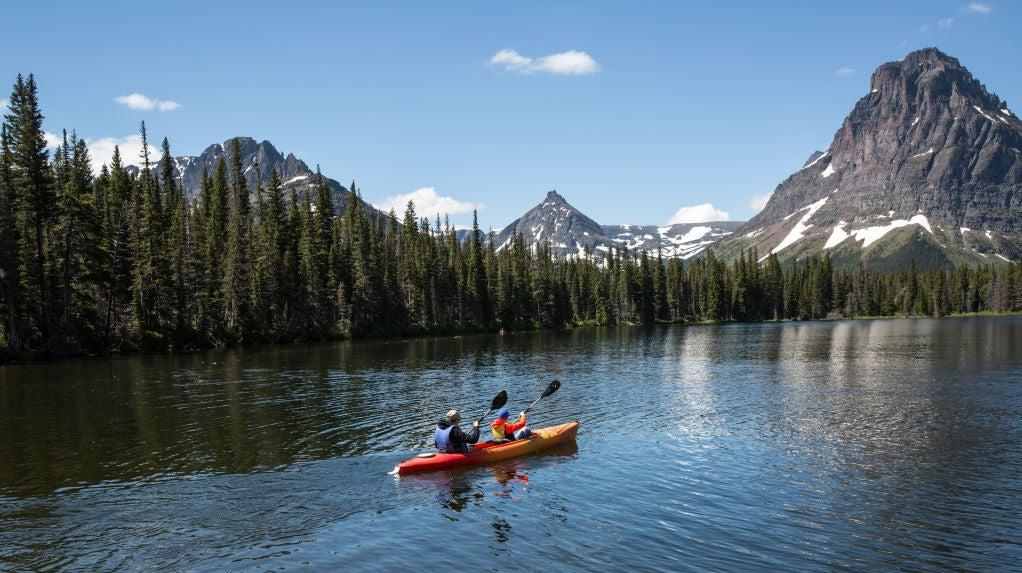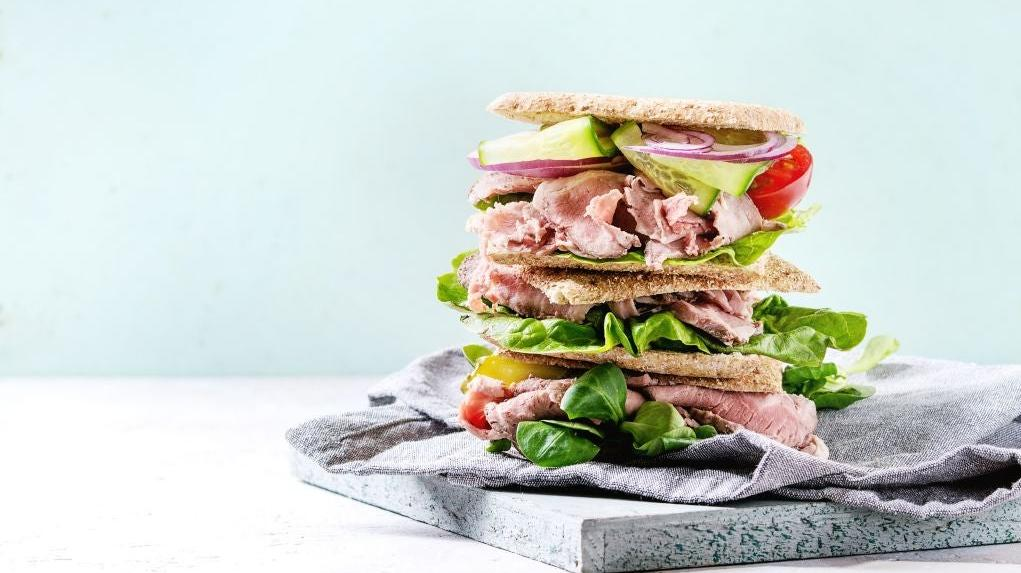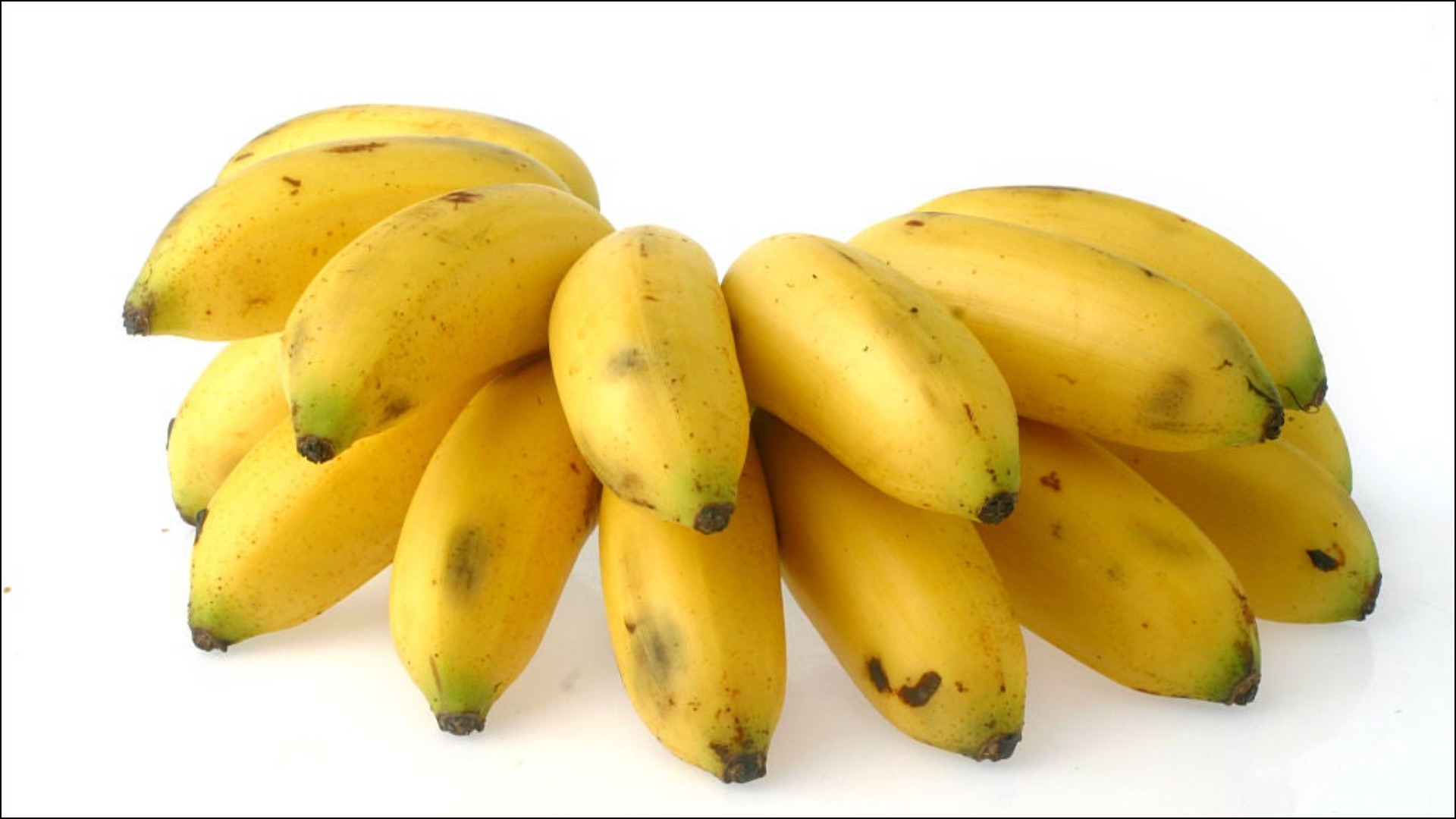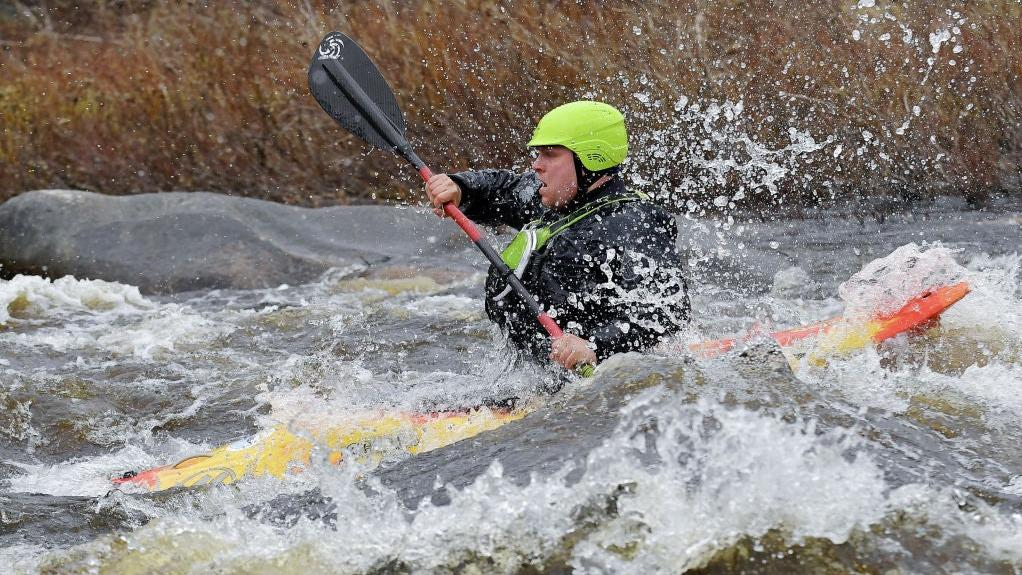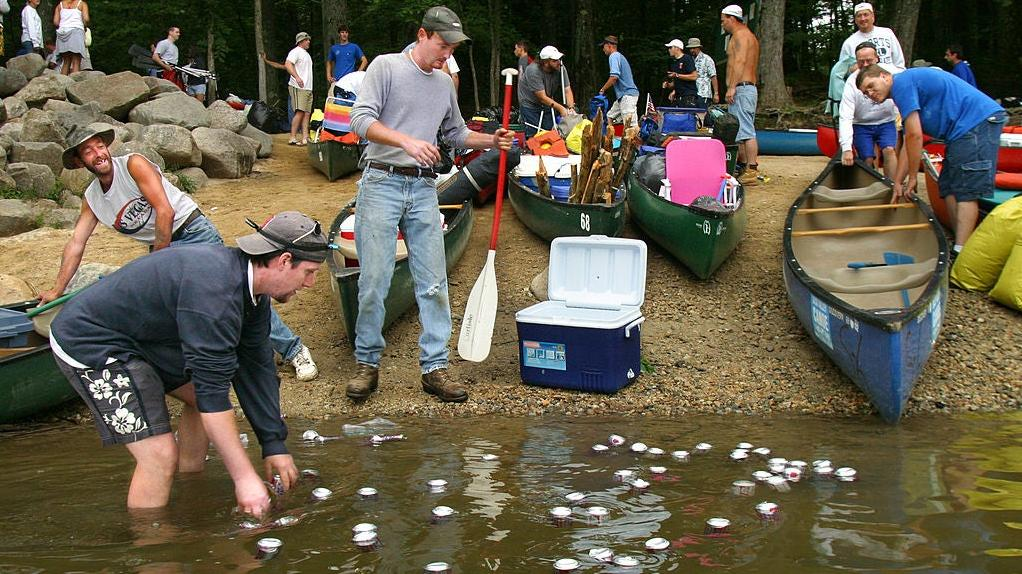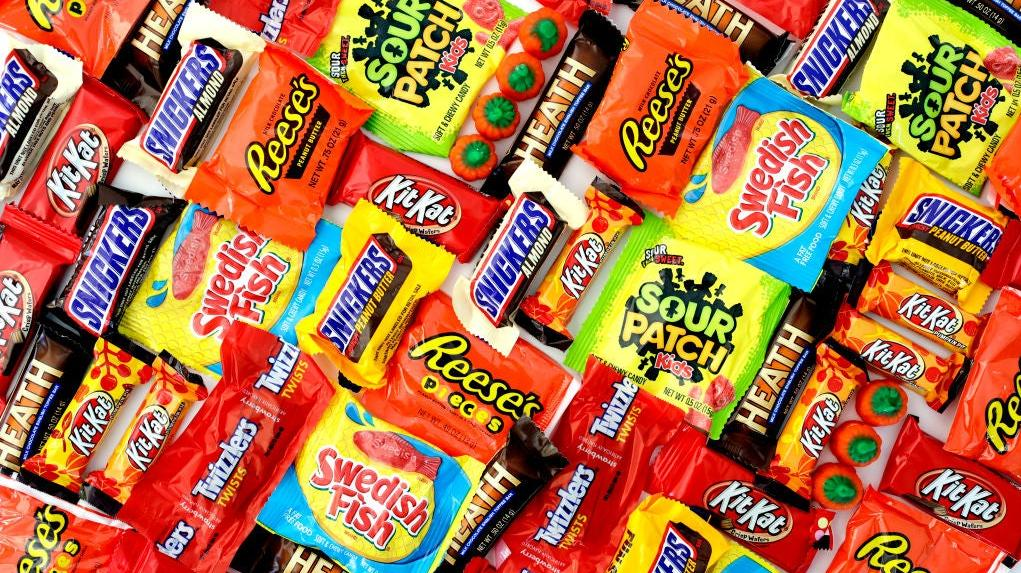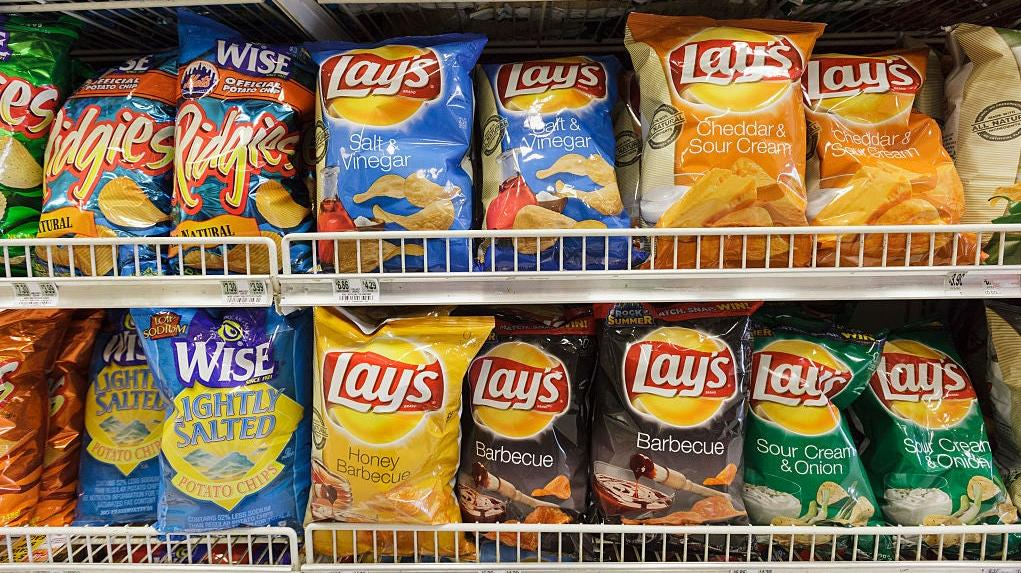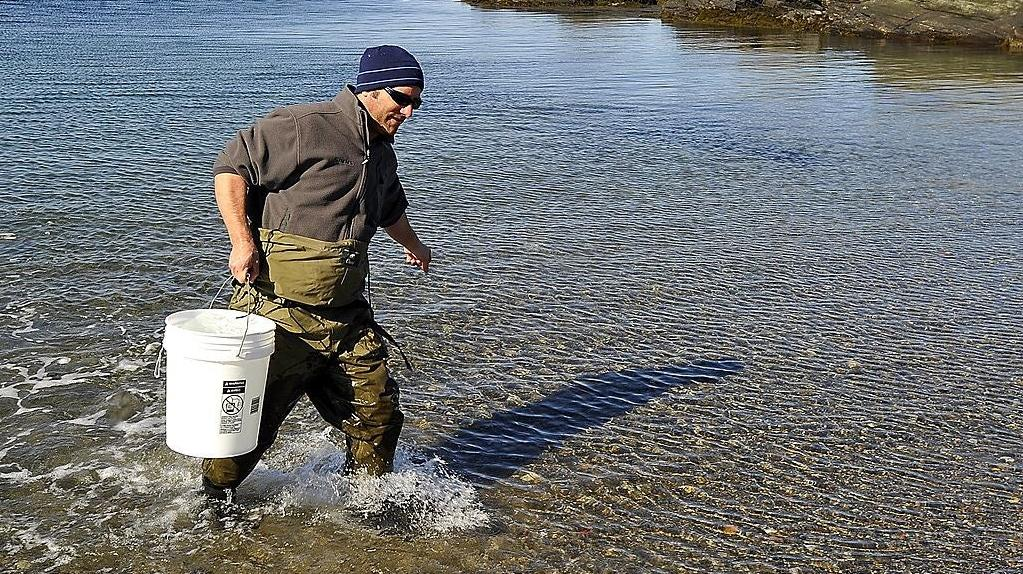The Hungry Floater's Guide To Snacking On The Water
Keeping snacks dry while canoeing or kayaking is easier than you might think.
I have a rare condition known as River Rat Syndrome. It typically flares up in late June, causing my toes to prune, my hair to sweep itself into a tangled ponytail, and my feet to slide into the Chaco sandals I purchased from the Bass Pro kids' section in 2014. During a River Rat episode, I have 24 hours to get myself to a river and into a kayak or I could die. It's very serious.
Floating is my favorite way to spend a hot summer day, but I know that snacking on the water can be a pain if you're not prepared. Sandwiches can get soggy, hands can get sticky, and blood sugar levels can drop, turning a perfectly lovely float into a buoyant hellscape. Fortunately, I've perfected the art of yakkin' and snackin'. Here are my tips, gleaned from years of falling out of small watercraft.
Sliced bread is your enemy
Ah, a classic turkey sandwich! An excellent river lunch, right? Wrong!
Real river rats know that sliced sandwich bread can shift mid-float, destroying your carefully arranged sandwich structure and causing a huge mess. By the time you reach into your Ziploc bag and attempt to eat the thing, you've got meat falling out of every side, hot mustard gushing onto your straw cowboy hat, and crumbs trickling down your bikini top. It's a disaster.
Trust me here: skip the sliced bread and go with a wrap or pita sandwich during your float. A wrap can do everything sliced bread can do, but it creates a more stable sandwich experience, ensuring your sandwich fixings stay put, even as you rock the proverbial boat. You can also eat a wrap one-handed, which means you can use your other hand to slather on some sunscreen or pick your wet shorts out of your butt. For the perfect float trip wrap, I recommend opting for peanut butter and jelly or hummus and veggies. Sliced deli meats might not look so good after you've been on the river for eight hours.
Embrace nature’s Ziploc bag
Leave no trace. It's a key principle for outdoor adventurers everywhere, and it's especially important when you're visiting a vulnerable waterway.
Opting for fruits and veggies is a great way to cut down on float trip garbage; plus, if your refuse accidentally goes overboard, natural materials like banana peels are totally biodegradable. If you're packing fruit, skip sticky, hard-to-peel options like oranges. I tend to go for apples and bananas. (I'm especially fond of the latter because they comes with their own packaging. Nature's Ziploc bag, if you will.) You can also load up on protein-rich hard-boiled eggs, which can be left in the shell for extra protection until you're ready to dig in. I say this without a hint of sarcasm: slurping down a few eggs on a scenic waterway is very satisfying.
Keep your energy up
Attempting to complete a six-hour float with nothing but PBR and Fritos? That's a marriage ruiner, folks. Even on an easy river, paddling can torch a lot of calories. Keep your spirits high by fueling yourself with a mix of proteins, carbs, and fat every two to three hours. I do this by dividing my float lunch (usually a wrap, a piece of fruit, some nuts, and an individually-packaged piece of candy like an Airhead) into two. Eat one half a few hours into your float, save the other half for later, and bring more snacks than you think you'll need.
Know your cooler’s limits
Overfilling your cooler is a recipe for a bad time. Too much ice, a surplus of beers, or an uneven fill can weigh down your canoe or kayak and contribute to tipping—and a canoe tip can send your beloved brews sailing downriver, along with your sunscreen, wallet, and dignity. For best results, stick with a small, soft-sided cooler and no more than two to three beers per person. (This will ensure relative sobriety, which is a plus if you're operating a river vessel of any size.) Soft-sided coolers also usually come with a strap, which you can anchor to your boat or your person to protect the goods.
A tip on river boozing: avoid beer bottles of any kind, even if they're twist-offs. Twist-offs are gonna be a lot harder to open with wet hands, and glass bottles can pose a safety hazard. Stick to cans.
Skip the stickies and sours
I love eating candy on the river, but chocolate melts and sours make a mess of your hands. I recommend avoiding goodies with annoying textures. Instead, opt for individually packaged treats like gummies or Laffy Taffy. Individual bags of Fruit Gushers also reign supreme—just make sure you pack them at the top of your bag to avoid smushing.
Beware the Wet Chip Paradox
Time and time again, I've fallen victim to something I call the Wet Chip Paradox. You want a handful of delicious chips, so you stick your wet hand in the bag—only to dampen the rest of the chips, creating a mushy mess for the rest of your trip. Learn from my mistakes: opt for individual snack bags or, better yet, heartier snacks like nuts or granola bars that can hold up to a little river water. That can of Pringles is going to get wet, but that individual bag of Cool Ranch Doritos will be the envy of the river. Just be sure to bring a waterproof container for your garbage to ensure you don't leave any trash behind. (See next slide for more info.)
When in doubt, stick it in a bucket
Biodegradable snacks like bananas are great on the river, but you're going to want to seal everything else in Ziploc bags (and maybe even double-bag if you're worried about rough water). But where do the Ziploc bags go? If you're a frequent floater, I recommend a dry bag with buckles at the top. You can grab these at any outdoor retailer, and they're a great all-purpose destination for your snacks, phone, camera, and keys. But if you're just going out once or twice this summer, you can opt for a cheap three or five-gallon bucket, readily available from your local pizza parlor or bakery. Give it a good rinse before you load it up, and use it as a storage bucket and trash receptacle on your trip. Plus, it floats.
